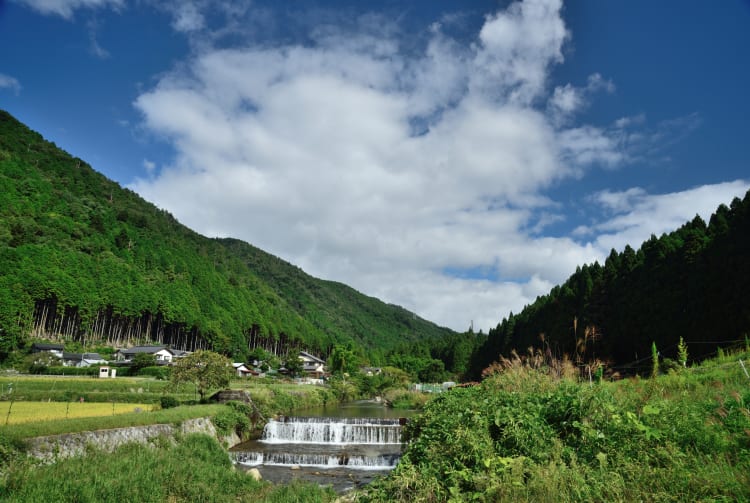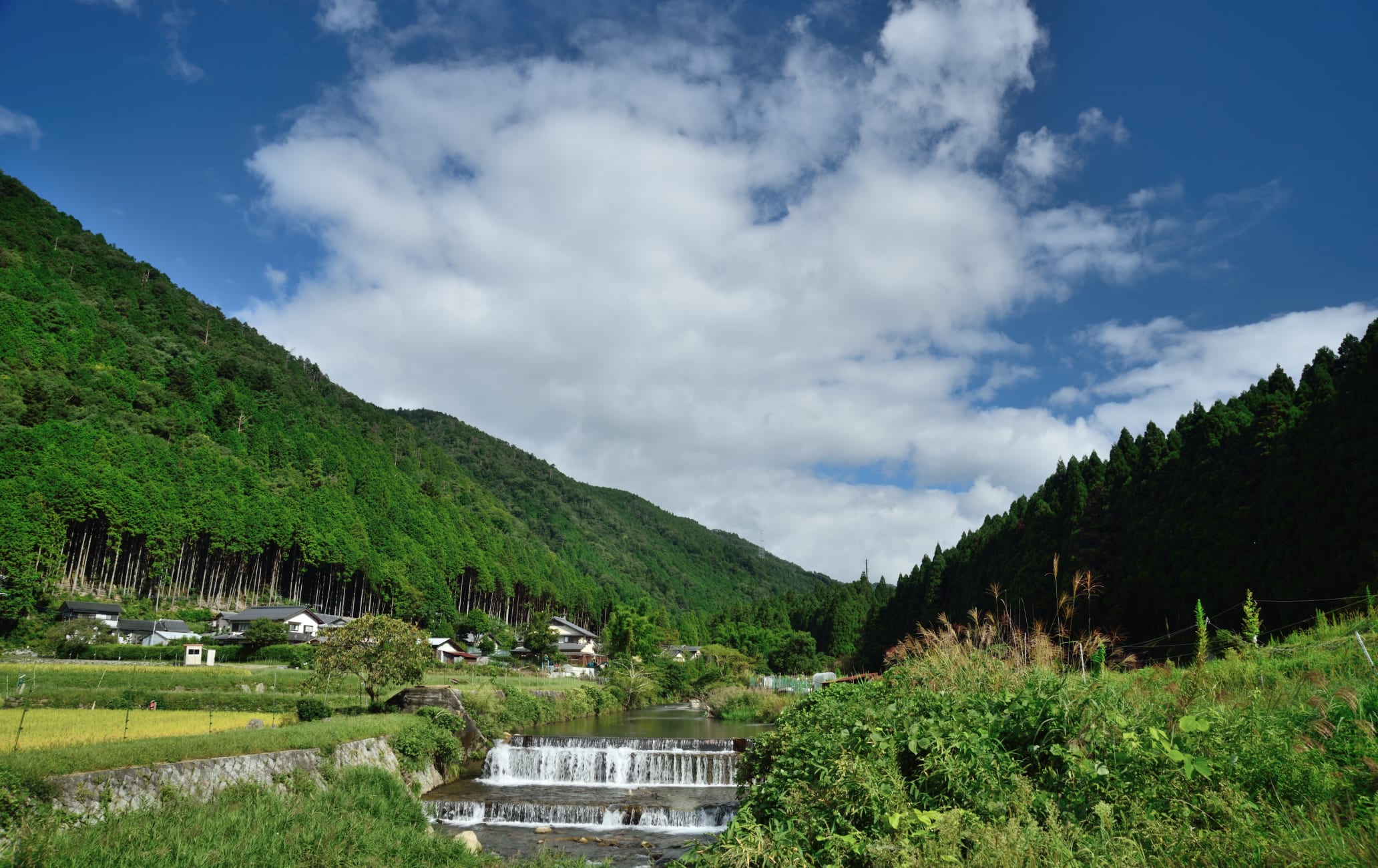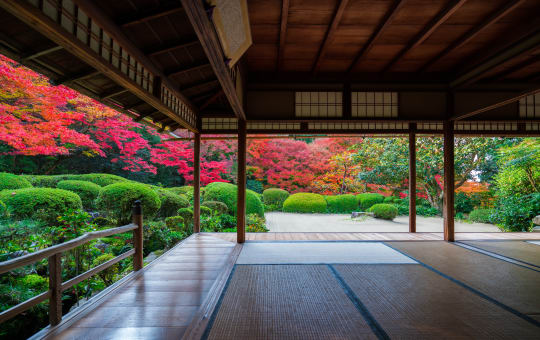Magnificent imperial villa crowns this rural and regal Kyoto neighborhood
The Rakuhoku neighborhood is just north of central Kyoto and has long been considered a gathering place for artists and traditional craftsmen. It is home to fabulous temples and tree-lined streets filled with quaint shops and cafes and a magnificent imperial villas.
Don't Miss
- Shisendo Temple—the home of Chinese poets
- Viewing Enkoji Temple in the fall
- Shugakuin Rikyu Teien Temple Garden
- Shopping on Shirakawa-dori
How to Get There
Rakuhoku is easily accessible from Kyoto Station and other parts of the city.
Shisendo Temple : From Kyoto Station, take the Karasuma Line to Kokusaikaikan Station. From there, take bus #5 to Ichijoji-kudari-matsumachi bus stop. The temple is a 5-minute walk from there.
Alternatively, from Demachiyanagi Station, take the Eizan Main Line to Ichijoji Station. It's a 10-minute walk from there.
Enkoji Temple : From Kyoto Station, take the Karasuma Line to Kokusaikaikan Station. From there, take bus #5 to Ichijoji-kudari-matsumachi bus stop. The temple a 10-minute walk from there.
Alternatively, from Demachiyanahi, take the Eizan Line to Ichijoji Station. From there, it's a fifteen-minute walk.
Shugakuin Rikyu Teien Temple Garden: From Kyoto Station, take the Karasuma Line to Kokusaikaikan Station. From there, take bus #5 to Shugakuin Rikyudo bus stop. The temple is a 15-minute walk from there. Alternatively, from Demachiyanagi, take the Eizan Line to Shugakuin Station. It's a 10-minute walk from there.
Shirakawa-dori: From Kyoto Station, take the Karasuma Line to Kokusaikaikan Station. From there, take bus #5 to Shugakuin Rikyudo bus stop. Alternatively, get off at Matsugasaki Station on the Karasuma Line and walk 20 minutes to Shirakawa-dori.
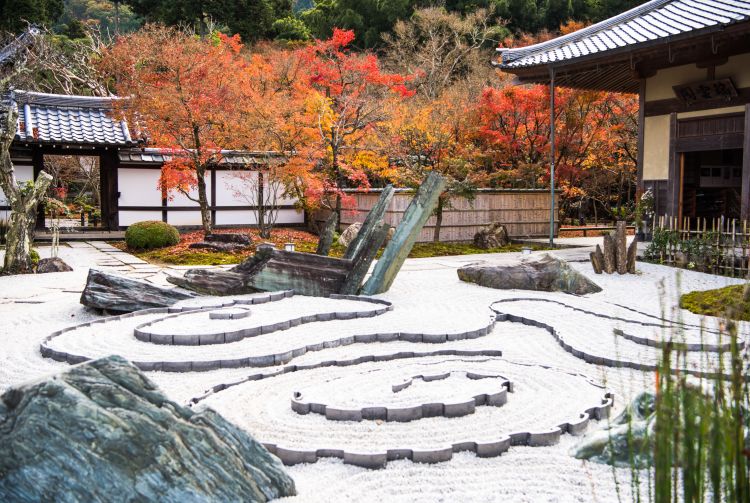
Escape the crowds
The Rakuhoku area remains relatively quiet. The area was once home to vegetable fields and rice paddies. A few fields remain, but most have been replaced by modern buildings.
Shugakuin Imperial Villa
Built in the 17th century by Emperor Gomizunoo, Shugakuin Imperial Villa is comprised of three villas, each with its own garden. The villa remains as it was originally, surrounded by rice paddies.
A small wooden building sits on the south side of the villa's pond. It has great views of the surrounding city and mountains beyond.
To access the garden, you must sign up for one of the regularly scheduled daily tours of the Shugakuin Imperial Villa . Applications can be made in advance from the Imperial Household Agency's website, or on the day on a first-come-first-serve basis at the villa.
Enkoji Temple
Enkoji is a must-visit for its autumn foliage and gardens. Founded by Tokugawa Ieyasu in 1600 as the Rakuyo School, it gained a reputation for being an open-minded institution, welcoming priests and commoners alike. It later became a seminary for women.
This temple is known for its suikinkutsu, a musical ornament unique to Japanese gardens. It emits a bell-like sound, adding to the peaceful atmosphere. Enkoji also features a bamboo forest and two impressive rock gardens, one of which is in the design of a running dragon. There's a great view of Kyoto's mountains from a small hill behind the temple.

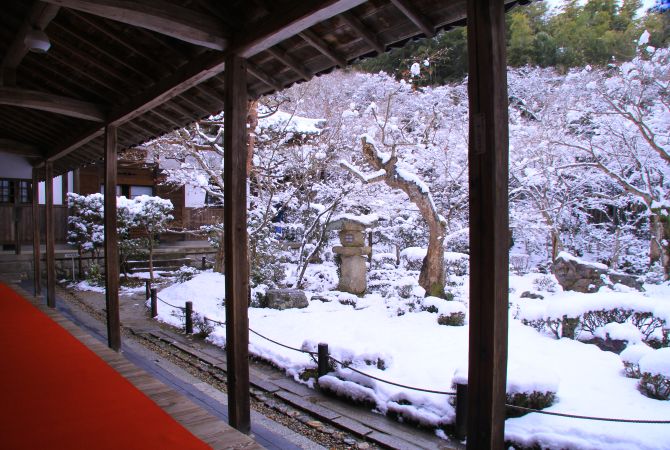
Shisendo Temple
Shisendo means “hermit's retreat,” a fitting name for a temple concealed in a residential neighborhood. A retirement home built in 1641 by Chinese scholar and landscape architect Ishikawa Jozan, it is home to 36 portraits of ancient Chinese poets.
The kare-sansui, or dry landscape garden, is especially attractive when the azaleas bloom in the spring. The flowering bushes on the sand represent islands in a sea and add to the garden's allure.
A hip hangout
There are many universities close by, including well-known Kyoto University, and the area has a college town feel to it. Brimming with cute shops, cafes, and bookstores, it also has its fair share of traditional Japanese eateries. In contrast, Rakuhoku is known for its plethora of ramen shops.
Shirakawa-dori stretches across the Takano district of Rakuhoku. Once packed with tea houses that served travelers en route from Kyoto to Shiga , it now boasts hip shops and cafes, which is why it is especially popular with young people.
Because of the number of temples, gardens, and quaint shops, you can easily spend a few hours in Rakuhoku, or even a whole day. You can visit one or two of the sites in a couple of hours, but lunch, afternoon tea in a cafe, or an eclectic day will reveal a whole new world to even the most seasoned Kyoto visitor.




















































